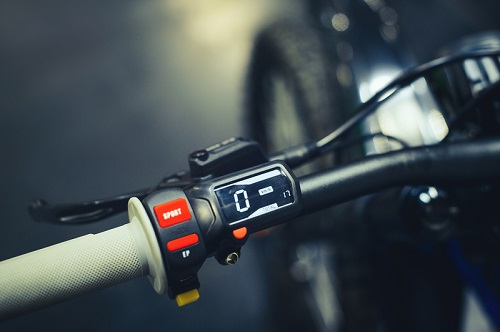
Initially disparaged as athletes using “mechanical doping,” e-bike competitors are being embraced, with events and registration categories all their own.
“E-bikes are definitely a growing sector of the market, and something we are embracing,” USA Cycling’s Guillermo Rojas told SDM in 2019. “We are starting to see more events offering e-bike divisions, and it really is increasing their participation. The UCI (Union Cycliste Internationale, the international governing body of the sport) has already added e-bike divisions to major events.”
Additionally, Rojas noted, acceptance of e-bikes was something that expands upon USA Cycling’s vision of the sport.
“We are welcoming the e-bike movement because cycling is one of the few sports that we can say is a sport for a lifetime, from the two-year-old who starts out on a toddler bike without pedals, to the 80- or 90-year-old who is still out cycling and possibly even competing in senior games or in age divisions of races. When you add e-bikes into your events, you create a way to welcome people who perhaps don’t have the mobility they once did – or who need the assistance an e-bike can provide. If it keeps them cycling (maybe they’re not not even competing, but just going on recreational group rides or touring with their friends), it’s still a win for the sport as a whole (and for us as well).”
The infrastructure that supports cycling is also increasing, with cities adding walking, running and cycling trails to parks, creating even more of an opportunity than ever to remain active in a safe setting, according to Dennis Markatos-Soriano, Executive Director, East Coast Greenway Alliance.
“The East Coast Greenway Alliance sees great potential for e-bikes to make two wheels the best way to get around in communities all over our great country,” he notes. “As long as we also make key infrastructure investments to complete greenway networks, we see e-bikes helping to triple cycling in both big cities like New York or Philadelphia and in smaller communities like Simsbury, Connecticut, or Titusville, Florida. Lowering the cost of e-bikes paired with building out safe infrastructure is a one-two punch to tackle the climate crisis and build a healthier tomorrow.”
 That’s not to say the road was always smooth. In 2020, National Parks Service was forced to disband its e-bike advisory group. The group, formed to study the potential use of e-bikes in national parks, had been meeting with NPS officials regularly over the years; however, conservationists, concerned about the potential for e-bikes in national parks, pushed back. As of 2022, the issue was resolved, and e-bikes are now welcome in national parks.
That’s not to say the road was always smooth. In 2020, National Parks Service was forced to disband its e-bike advisory group. The group, formed to study the potential use of e-bikes in national parks, had been meeting with NPS officials regularly over the years; however, conservationists, concerned about the potential for e-bikes in national parks, pushed back. As of 2022, the issue was resolved, and e-bikes are now welcome in national parks.
Predictably, the market for e-bikes has also grown; in fact, according to Statista, it is tipped to generate around $53.5 billion in revenue by 2027, with a compound annual growth rate of around 12.27 percent between 2022 and 2027.
Something interesting: This boost in the market is forecast to be due to growing environmental and health concerns. Consumers showed growing interest in alternative commuting methods during the pandemic and that growth has not slowed down.
And at the rate it’s going, it might just explode. Recently introduced legislation would create an e-bike tax credit. The Electric Bicycle Incentive Kickstart for the Environment (E-BIKE) Act, led by Representative Jimmy Panetta (D-CA) and Senator Brian Schatz (D-HI), prioritizes electric bicycles as a zero-carbon mode of transportation by making them more affordable and accessible for all Americans.
“Many people are looking to get out of their cars and get on to e-bikes not just for recreation, but also for transportation purposes,” said Panetta. “Although we’re seeing more people on them in our communities, more needs to be done to ensure that everybody across our country has access to an e-bike. With its fully refundable tax incentives for those in the lower economic levels, the E-BIKE Act is a commonsense way to encourage the ownership of e-bikes. By incentivizing Americans to own and use e-bikes, we are allowing them the chance to help improve the quality of life in our communities and tackle the climate crisis in our country.”
“Transitioning to a clean energy economy includes changing the way we get around. That means transit, rail, and electric buses, cars, and bikes. Our bill will make it more affordable for working people to buy an e-bike and help get cars off the road,” added Schatz, chairman of the Senate Appropriations Subcommittee on Transportation, Housing and Urban Development.
First introduced in 2021, the version reintroduced this Congress looks largely similar. If signed into law, the E-BIKE Act will offer individual consumers a refundable 30% tax credit for purchasing an electric bicycle — up to a $1,500 credit for new bicycles less than $8,000. The credit would be allowed once per individual every three years or twice for a joint-return couple buying two electric bicycles. New to this version is this addition of income caps that parallel existing electric vehicle tax credit caps: an annual salary of $150,000 for single filers, $225,000 for heads of households, and $300,000 for those filing jointly.
“Incentivizing electric bicycles makes them a competitive transportation option for more Americans and supports a national effort to lower carbon emissions,” said PeopleForBikes President and CEO Jenn Dice. “The E-BIKE Act rightfully positions electric bicycles as a critical part of a larger solution to climate change and equitable mobility. We’re grateful to our climate leaders in Congress leading the charge on e-bikes.”
The bill also mandates a report from the IRS after three years to understand the distribution of the credit by income tax bracket and adjust for equitable distribution in the future.
An electric bicycle tax credit was included in the House-approved Build Back Better Act in 2021, but the provision did not make the cut in negotiations as the package evolved into the Inflation Reduction Act (IRA), now law.
When officials in Congress first introduced the E-BIKE Act in 2021, it was one of few proposed electric bicycles incentives in the U.S. Enthusiasts backed up the measure, noting that with the advent of e-bikes, there could be an 11% decrease in carbon emissions with a 15% increase in electric bicycle mode share.
In Denver, a successful and popular e-bike voucher program led to 71% of recipients using their cars less after purchasing an e-bike, with 90% riding weekly. An all-in approach to reducing carbon emissions must recognize the power of electric bicycles to take cars off the road while keeping people moving, active, and connected to their communities.
Rojas said the cycling event market could help drive growth – but that it is up to race owners, not lawmakers, to put that piece of the puzzle into action.
“At this point, it’s up to individual race directors and event companies whether they want to add in e-bike divisions. We can supply information to race directors who want to learn more and we encourage them to look into it. We expect this growth to continue as more athletes become aware of e-bikes as a viable option. Particularly now, as cities are adding walking, running and cycling trails to parks, there’s more of an opportunity than ever to remain active in a safe setting.”

